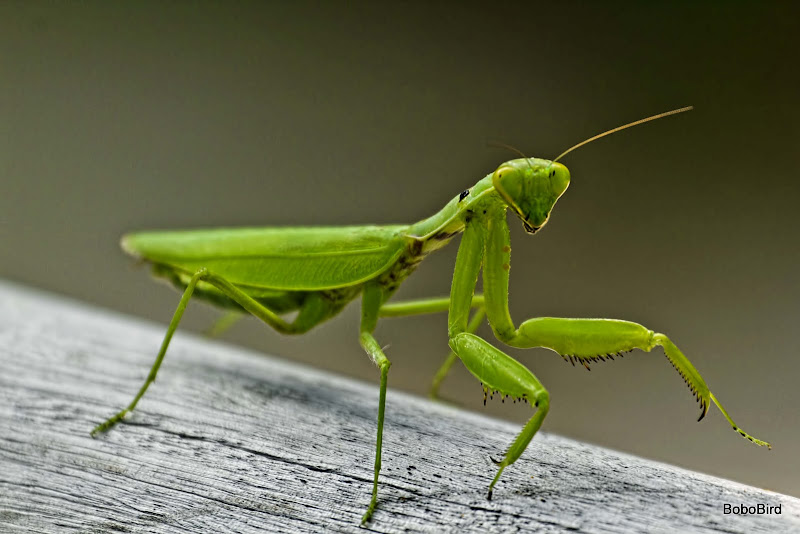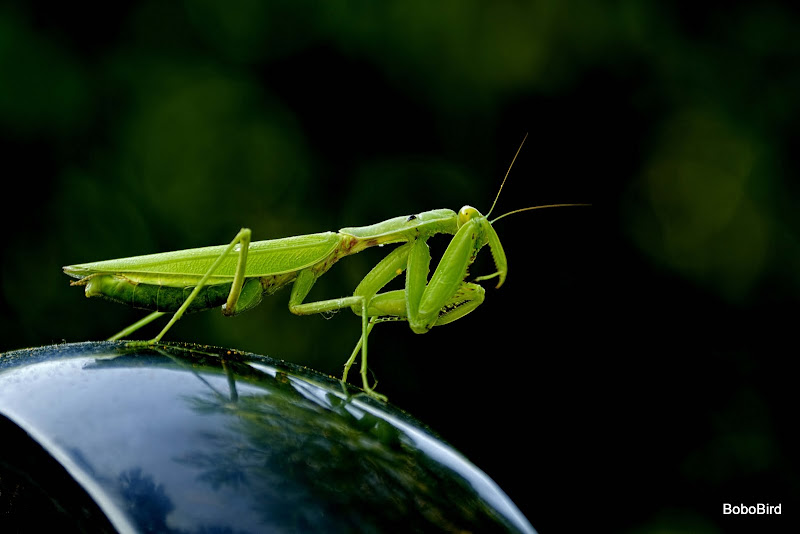Results 421 to 440 of 1723
Thread: Post your insects
-
7th November 2011, 02:41 AM #421
-
7th November 2011, 03:33 AM #422

- Join Date
- Oct 2011
- Location
- Gold Coast, Australia
- Posts
- 75
- Real Name
- Wendy
Re: Post your insects
Hi Robert,
I am interested in looking at these extension tubes as I would like to try macro (and i'm brand new at photography) with my nikon d7000. The lens I have (18-105mm) is pretty good but I would like to get closer! Where do you buy them and how much do they cost? Is it worth trying them or should I think about a macro lens? Would love to hear your opinion,
Wendy
Here is one I took with the above camera and lens in the local botanical gardens.

-
7th November 2011, 06:59 PM #423

- Join Date
- Jan 2009
- Location
- South Devon, UK
- Posts
- 14,626
Re: Post your insects
If you are going to get serious about macro photography of insects, Wendy, I would recommend getting a 'proper' macro lens. But these aren't cheap.
For nervous insects, I would advise a 150 mm lens, or even an excessively heavy and expensive 180 mm. But you can manage with something a little smaller for flowers or creatures which aren't likely to run away from you.
It is this 'scare distance' which is critical and I often find that I am lucky to get within 12 ins of the subject.
Extension tubes work best on larger zooms, where you have a minimum focusing distance of around 3 ft, because they allow you to physically get closer to the subject.
What is the minimum focus distance of your current lens?
Tubes are widely available, either from your camera supplier or as third party equipment, but check you are purchasing a version which is compatible with your camera.
I wouldn't use anything less than a 25 mm tube (depth) which would cost a little over £100 in the UK. But that sum is probably around a quarter of the price of a decent macro lens; so the decision is up to you.
And I often add a 1.4x converter to my 180 macro lens to get more magnification at a greater working distance when dealing with difficult subjects. But these do require a suitable good quality lens.
A good tripod is another essential for macro photography.
-
7th November 2011, 11:25 PM #424

- Join Date
- Oct 2011
- Location
- Gold Coast, Australia
- Posts
- 75
- Real Name
- Wendy
Re: Post your insects
Hi Geoff, thanks very much for the advice. The minimum focus distance is about 3ft which is pretty good I find, although I would like some greater magnification. I am often taking photos of plants and spider webs which I find enjoyable. I suppose I would have to take the crop sensor into account as well when thinking about magnification (this could work to my advantage). I also have the 55-300mm VR lens, would this be suitable?
-
8th November 2011, 06:42 PM #425

- Join Date
- Jan 2009
- Location
- South Devon, UK
- Posts
- 14,626
Re: Post your insects
I would say that 3 ft with a 105 mm lens is a bit too far for serious macro work, even with a tube. For example, my 24-105 gets me to around 9 ins which is tolerable, providing I can physically get that close.
My 70-200 with 25 mm tube can focus around 2 ft which is just about acceptable. Originally, I started macro photography with a 70-300 lens which worked at 3 ft with tube.
I'm not sure about the focus distance of the 55-250 but if it isn't more than 3 ft it would also just work with a tube.
But when we do comparisons at 12 ins, a 150 mm lens clearly outperforms the other options, although at a fair bit of extra cost. My other lenses work out at an approximate equivalent of 100 mm at 12 ins. A slightly larger lens (50 mm extra) does make a difference if printing at around 10 x 8 ins after a bit of cropping.
However internet use photos can take a considerable amount of cropping and still work providing they are well focused.
Also, we are talking about relatively small insects here so your lenses should be sufficient for flowers or larger insects like butterflies etc when used with a tube.
-
8th November 2011, 10:53 PM #426New Member

- Join Date
- Aug 2011
- Location
- College Staion, Texas USA
- Posts
- 1
- Real Name
- Bill Barnes
Re: Post your insects
This is my first post after joining the CIC forums. Hope you like it.

Yellowjacket Wasp by Arrowsmith_, on Flickr
Bill
aka: NightRanger
-
9th November 2011, 03:45 AM #427

- Join Date
- Apr 2011
- Location
- Ontario (mostly)
- Posts
- 6,667
- Real Name
- Bobo
Re: Post your insects
Welcome Bill, good angle, nicely done.
-
9th November 2011, 03:46 AM #428

- Join Date
- Apr 2011
- Location
- Ontario (mostly)
- Posts
- 6,667
- Real Name
- Bobo
-
9th November 2011, 04:04 AM #429

- Join Date
- Apr 2011
- Location
- Ontario (mostly)
- Posts
- 6,667
- Real Name
- Bobo
-
10th November 2011, 12:42 PM #430
-
10th November 2011, 12:47 PM #431
-
10th November 2011, 02:05 PM #432

- Join Date
- Apr 2011
- Location
- Ontario (mostly)
- Posts
- 6,667
- Real Name
- Bobo
Re: Post your insects
Thanks Peter. As I said in the post it was an exciting encounter. She was totally friendly. Have never managed so many single subject keepers before.
Last edited by Bobobird; 10th November 2011 at 05:25 PM.
-
11th November 2011, 12:51 AM #433
-
11th November 2011, 09:36 AM #434
Re: Post your insects
The advantage is that the insect stands out very clearly, so in itself it doesn't look bad. But the focus is not really sharp enough, might have to do with what you focused on. The lighting is ok, but there is too much reflection off the wings. Maybe you could have bounced the light in another way.
I like the white background though, I can imagine a better end result where it really works.
-
11th November 2011, 06:27 PM #435

- Join Date
- Jan 2009
- Location
- South Devon, UK
- Posts
- 14,626
Re: Post your insects
Using flash isn't wrong where you need a fairly small aperture to give plenty of sharp focus depth, but in a case like this I would have adjusted the flash output slightly downwards, by using the flash compensation setting on a negative setting of say -1 or possibly -2 which would have prevented too much over exposure.
Some shiny insects will give small over exposed areas no matter what settings you use; unless you seriously under expose and then the shadows get too dark.
But the main requirement for sharp insect photos is a tripod. If you use the auto flash/exposure settings you will probably end up with a shutter speed something like 1/60 and a wide aperture, both of which make hand held macro shots difficult.
-
12th November 2011, 02:05 PM #436

- Join Date
- Nov 2011
- Location
- Jakarta,Indonesia.
- Posts
- 99
- Real Name
- Vincent
-
12th November 2011, 09:46 PM #437
-
13th November 2011, 06:07 PM #438
-
14th November 2011, 02:21 AM #439

- Join Date
- Nov 2011
- Location
- Jakarta,Indonesia.
- Posts
- 99
- Real Name
- Vincent
-
14th November 2011, 08:41 AM #440

 Helpful Posts:
Helpful Posts: 

 Reply With Quote
Reply With Quote











